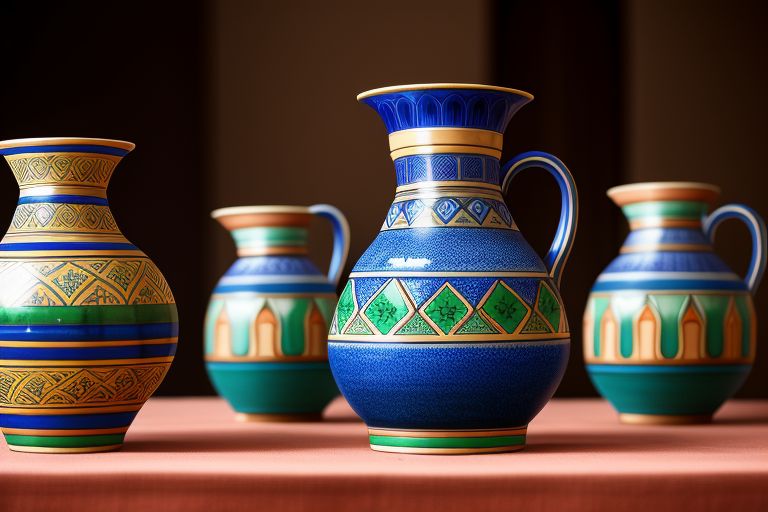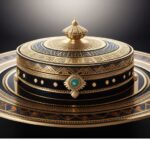Introduction to Saudi Arabian Pottery
Pottery is one of the oldest crafts in the world, and in Saudi Arabia, it holds a special place as a reflection of the nation’s rich cultural heritage. From ancient Bedouin traditions to modern artistic expressions, Saudi Arabian pottery has evolved while maintaining its traditional essence and craftsmanship.The History of Pottery in Saudi Arabia
Pottery in Saudi Arabia dates back thousands of years, with early civilizations using clay to craft utensils, storage jars, and decorative pieces.
✔ Pre-Islamic Era – Pottery was widely used by early Arabian civilizations for storing water, grains, and oils.
✔ Islamic Influence – Decorative pottery with intricate geometric and calligraphic designs became popular.
✔ Bedouin Pottery Traditions – The nomadic tribes created simple yet functional earthenware that was essential for daily life.
✔ Modern Revival – Today, Saudi Arabian pottery has gained recognition as both a functional craft and an art form.
Traditional Saudi Pottery Techniques
Saudi Arabian potters use age-old techniques to create handcrafted pottery with unique textures, patterns, and colors.
1. Hand-Molding
- The oldest technique, where clay is shaped entirely by hand without using a wheel.
- Common for creating large jars and water storage pots.
2. Wheel-Throwing
- Introduced later, allowing for greater precision and symmetry.
- Used to make bowls, plates, and vases.
3. Engraving and Painting
- Geometric patterns and Arabic calligraphy are often carved or painted onto pottery.
- Natural pigments derived from minerals and plants give Saudi pottery its earthy colors.
4. Kiln-Firing
- Traditional kilns fueled by wood or camel dung were once used.
- Modern potters now use gas or electric kilns to achieve higher durability and refined finishes.
Famous Pottery-Making Regions in Saudi Arabia
Saudi Arabia has several key regions known for their distinctive pottery styles.
1. Al-Qassim
- One of the most famous regions for pottery, Al-Qassim is home to skilled artisans who specialize in handcrafted earthenware.
2. Jeddah
- Known for its coastal influence, Jeddah’s pottery often features maritime designs and bright colors.
3. Riyadh
- The capital city has become a hub for modern ceramic art, blending traditional and contemporary styles.
4. Najran
- Home to some of the oldest pottery traditions, influenced by Yemeni and tribal art.
Uses of Saudi Arabian Pottery
Pottery in Saudi Arabia serves both functional and decorative purposes.
✔ Kitchenware – Clay pots and tagines used for traditional slow-cooked Arabian dishes.
✔ Storage Jars – Large earthenware containers for storing water, dates, and grains.
✔ Decorative Art – Hand-painted vases, tiles, and wall hangings adorn Saudi homes and mosques.
✔ Religious and Cultural Artifacts – Pottery with Quranic inscriptions used for spiritual purposes.
The Modern Revival of Saudi Pottery
In recent years, Saudi Arabia has seen a resurgence in pottery craftsmanship, driven by artisans, cultural festivals, and government initiatives.
✔ Cultural Festivals & Exhibitions – Events like Janadriyah Festival promote traditional pottery.
✔ Educational Workshops – Many cities now offer pottery classes and studios for enthusiasts.
✔ Tourism & Souvenirs – Visitors to Saudi Arabia seek authentic, handmade pottery as souvenirs.
✔ Artisan Collaborations – Local artists blend modern and traditional techniques to create innovative ceramic art.
Where to Buy Authentic Saudi Pottery
If you’re looking to purchase genuine Saudi Arabian pottery, here are some top locations:
1. Souq Al Zal, Riyadh
- One of the oldest markets in the kingdom, offering handcrafted pottery by local artisans.
2. Al Balad, Jeddah
- A historic district where visitors can find traditional ceramics and pottery stalls.
3. Online Artisan Stores
- Many Saudi artists now sell their pottery through online platforms and Instagram shops.
Why Saudi Arabian Pottery is Special
✔ Deep Cultural Roots – Each piece tells a story of tradition and history.
✔ Handcrafted Excellence – Authentic Saudi pottery is made entirely by hand, ensuring unique details.
✔ Eco-Friendly Craftsmanship – Many artisans use natural clay and sustainable practices.
✔ Fusion of Old and New – A mix of traditional designs and modern artistic expressions.
Conclusion: Preserving the Art of Saudi Pottery
Saudi Arabian pottery remains an essential part of the nation’s artistic and cultural identity. Whether you are a collector, an artist, or a traveler, exploring the world of Saudi pottery offers a glimpse into the country’s rich heritage and craftsmanship.
For those eager to visit Saudi Arabia and explore its pottery culture, applying for a Saudi visitor visa is the first step. Meanwhile, entrepreneurs and business professionals interested in the pottery trade can apply for a Saudi business visa from the UK.
Saudi Arabian pottery is more than just clay and fire—it’s a testament to generations of creativity, tradition, and innovation.


